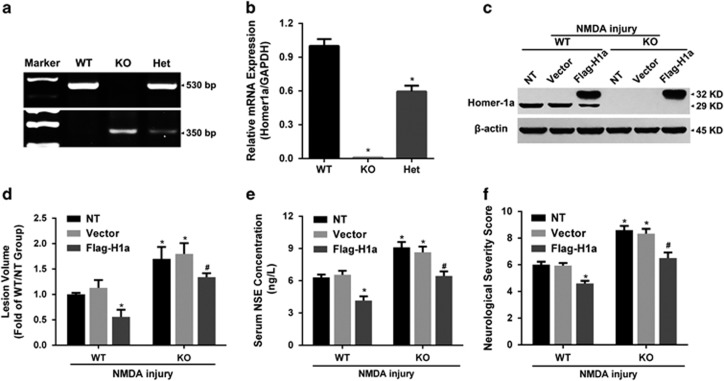Figure 7.
Homer1a reduced brain damage and improved neurological function after NMDA injury in vivo. Homer1a KO mice were confirmed and identified with DNA PCR (a) and qRT-PCR (b) analysis. After 7 days of stereotaxic injections of LV-Flag-H1a in Homer1a WT and KO mice, in vivo NMDA injury was induced. Homer1a was detected by WB (c), lesion volume was measured by Nissl staining (d), serum NSE levels (e) were measured and neurological deficits were evaluated by NSS (f; the NT group, WT n=8, KO n=6; the Vector group, WT n=7, KO n=6; the Flag-H1a group, WT n=7, KO n=6). Data are represented as mean±S.E.M. *P<0.05 versus the WT-NMDA injury and WT-Vector-NMDA injury groups; #P<0.05 versus the KO-NMDA injury, the KO-Vector-NMDA injury and the WT-Flag-H1a-NMDA injury groups

